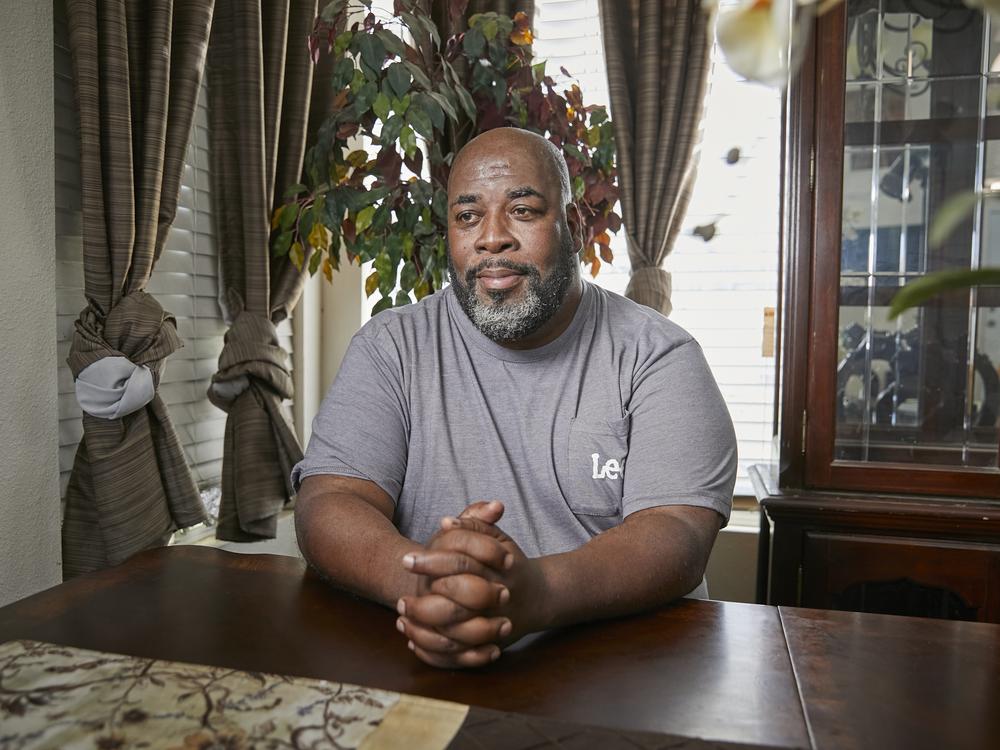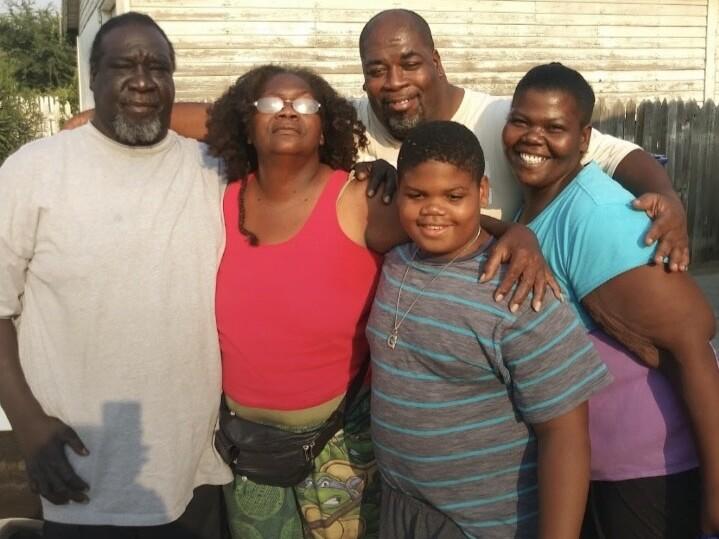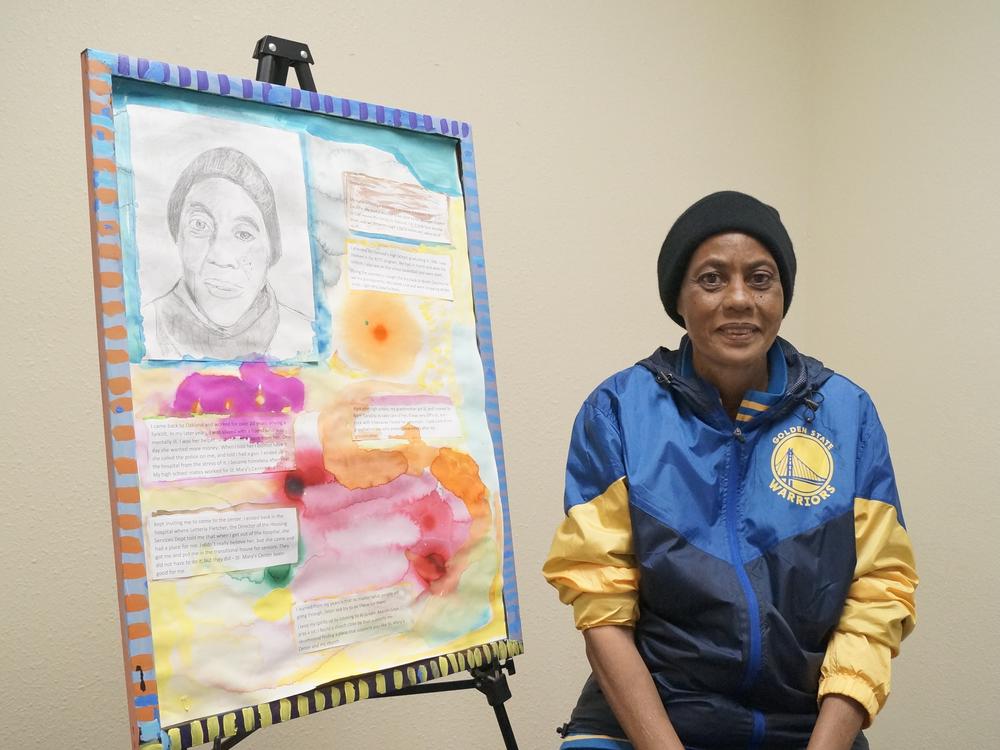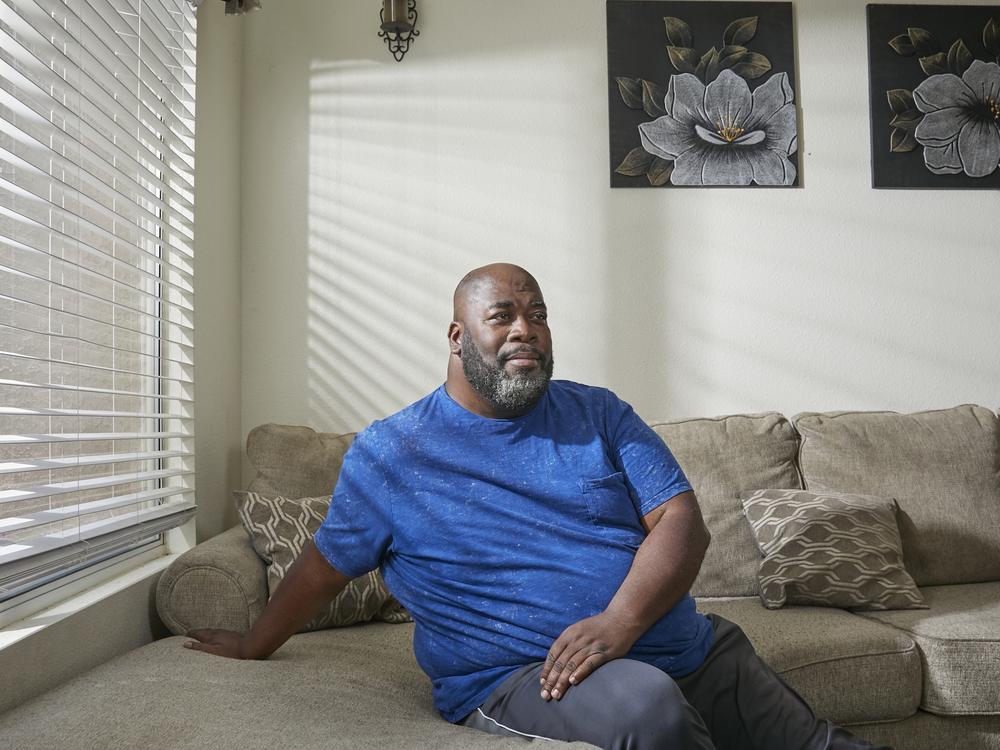Section Branding
Header Content
They sacrificed to care for family and ended up on the street
Primary Content
When Wymon Johnson invited his older brother Obie to move into his one-bedroom apartment in Bakersfield, California, it was supposed to be temporary. But soon after, Obie got pneumonia. Next, he was diagnosed with a serious lung illness (chronic obstructive pulmonary disease, or COPD), diabetes, and then kidney failure, all in 2010.
Johnson let his brother use the apartment’s single bed, and started sleeping on the couch. He had worked as a street cleaner for the city before being sidelined by an injury, and soon was taking care of Obie fulltime, helping him with insulin injections and pills as his vision faded, arranging dialysis and doctor’s appointments, helping him bathe and taking him to the podiatrist. Caregiving “is not what people assume,” he says. “It’s not just babysitting.”
Johnson earned minimum wage through a state program called In-Home Supportive Services that his brother was eligible for, due to his health problems. The brothers got by, but just barely. Every month, one check paid the bills, and the second went for food and rent.
Caring for his big brother was what Johnson did, for many years. He gave up dating and having a social life. He worried all the time. His blood pressure rose. “It’s very stressful,” he says now. “There’s an emotional toll, especially if you’re seeing someone get worse and worse.”
The brothers grew much closer than they had been as children, taking trips to the nearby Kern River to watch the birds and share lunch. “I think my brother being at home helped him live longer,” says Johnson. “I try to do things my mother would’ve been proud of—and momma would’ve wanted me to take care of him.”
In 2019 his brother died suddenly during what was supposed to be a simple medical procedure. Johnson was heartbroken — and now also unemployed. His bad back qualified him for disability, but it took many months for those benefits to start coming. He fell behind on the rent. He took in his brother’s son as a roommate, but the young man trashed the place, and they had to leave.
Johnson had nowhere to go. In the blistering heat of summer, he moved into his car — homeless for the first time at the age of 55. “I’d never been in that situation,” he says. “Absolutely never never.”
People who work with the unhoused, or who are themselves homeless, say this is not an unusual story. A son or sibling or niece gives up their own apartment or full-time job to look after a relative who needs help. They share expenses, maybe living off of a benefits check. But when that family member passes away or moves to a nursing home, the social security or housing subsidy stops coming. The caregiver is in mourning, out of a job and out of a place to live.
“These were folks who had left behind something to go care for mom, and then the bottom falls out,” says Margot Kushel, a homelessness researcher and professor of medicine at University of California, San Francisco. Her team documented this pattern in their intensive surveys and in-depth interviews of older homeless Californians.
The study that uncovered a surprise
It’s no secret that caregiving for adult can take a toll on anyone. Caregivers have higher-than-usual rates of depression and anxiety, and their own health often deteriorates. It’s also very expensive. On average, those who care for adults spend about a quarter of their income on out-of-pocket costs.
But it turns out that some pay an even higher price—sacrificing their own stability and winding up on the streets.
In the early 2000s, Kushel’s research on homeless Californians revealed that the unhoused population was getting older. Her team dug into that finding to learn more about how and why this was happening, leading to a series of follow-up studies. In 2013, they found that almost half the state’s homeless were older than 50, and 41% were over 50 when they first became homeless. In the fall of 2021, they launched what would become the largest systematic study since the 1990s, including data on almost 3,200 people.
To their surprise, they kept hearing about caregiving, even when they weren’t asking about it. Many of these older Californians said that they cared for family, both before and after becoming homeless. Some said that caregiving was a factor in how they became unhoused. In a sub-study focused on older homeless adults who occasionally stay with a family member, 13 of the 49 were actively caregiving. Three-quarters, like Johnson, were men.
It hadn’t been on their radar. “We weren’t looking for this story,” says Kushel. “It found us.”
Some were helping out in exchange for a couch to sleep on from time to time. But others gave up a rent-stabilized or subsidized apartment to help. One 62-year-old man included in the study quit his job and left his apartment to care for his father. When his father died, he had nowhere to go.
'Homelessness is you and me'
Donna Patterson, 62, looked after her roommate for many years in exchange for a cheaper rent in increasingly expensive Oakland, Calif. “I took care of her, took her to the doctor, took her to the store,” says Patterson, who also worked as a welder at a small metal parts finishing plant nearby.
“It’s absolutely something we see, and we don’t know how to rectify,” says Letteria Fletcher, the former clinical director at St. Mary’s who helped Patterson regain her footing. Often, it can be a paperwork problem. Fletcher mentioned several other clients who moved in with a parent living in subsidized housing in order to care for them. But since their name isn’t on the lease or the subsidy paperwork, when the parent dies, they have to leave.
Representatives from homeless service organizations in Minnesota, Arizona and Washington, DC say they’ve seen the same phenomenon. The fact that many homeless people maintain such strong ties to family is evidence of what this population is really like, says Joseph Becerra, community health worker at the University of Southern California Street Medicine team.
“Homelessness is you and me,” he says. “It’s not the stereotype anymore, the myth of a bunch of drug addicts.”
His colleague, the director of the Street Medicine team, said that two of the eight homeless patients he’d seen that day had lost housing because of the end of a caregiving situation. Both were homeless for the first time in middle age.
Grieving, with no place to go
Becoming homeless is just an extreme example of the financial squeeze on caregivers. About half of American caregivers say that they’ve had to stop saving, spend down their savings, borrow money or pay bills late. Almost 60% of working caregivers take a leave of absence or reduce their hours, according to recent survey data from AARP and S&P Global.
Roughly 15% quit entirely, and they may find it difficult to get hired again. Many employers don’t want to take a chance on an older person who hasn’t had a paid job for a few years, says Becerra.
After a few months living out of his car, some friends heard about his situation and made space for him in their home. His disability checks started coming through, so he could soon afford a rented room in a room-and-board house. He is still with the union as a retiree. He advocates to improve wages for state-paid caregivers, who currently earn $16 an hour in Kern County where he lives. (By comparison, the state-mandated minimum wage for fast food workers is now $20.)
Kushel envisions one brighter possibility. Given the extreme shortage of capable home caregivers, both in California and nationwide, people who have played that role for family could be recruited to do the same job for others, helping to build this essential workforce. “If you’re caregiving for 15 months for your mom, for instance you probably have transferrable skills,” she says.
Johnson says he does not regret his time caring for his brother, even though the arrangement eventually put him out on the street. “If I had to be the provider again, if I could go back, I wouldn’t change a thing,” he says. “I miss him.”
Kat McGowan is a freelance writer in California focused on caregiving.
Editing and layout by Carmel Wroth.




